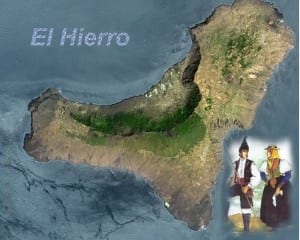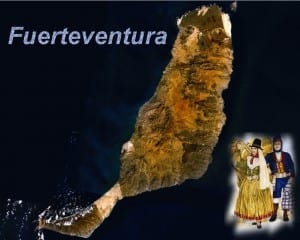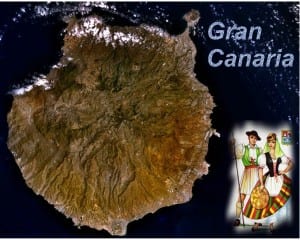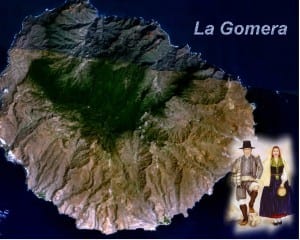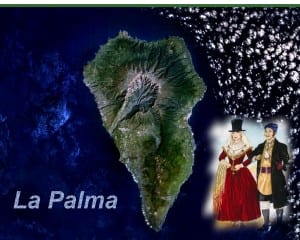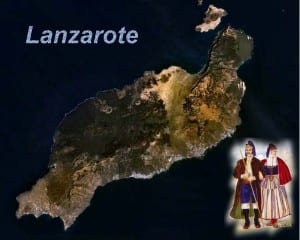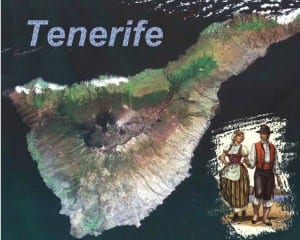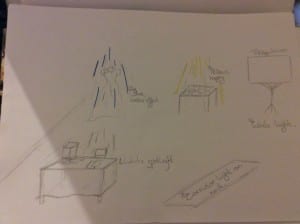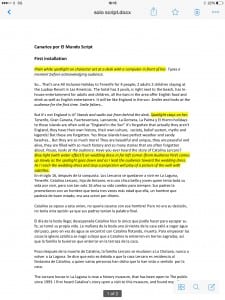The creation of this show started in a very personal place for me, it began with homesickness, thinking about home and family and how they mean so much to me. This then developed into thinking about how my home (Tenerife) is so often miss-represented and miss-judged. From here I decided that my audience should be offered the opportunity to see the Canary Islands as I do, as the people that live there do. I originally intended to recreate Canarian day in a durational performance so as to integrate the audience into the culture of the island; but upon much consideration and deliberation, I decided to give the audience snippets of what the Canaries are to me and those from there instead. My performance consisted of four installations: The first one starts off the performance with a travel agent selling a typical “all inclusive holiday to Tenerife” so as to introduce the audience to the idea that I am trying to fight against, from here I turn from travel agent into a Canarian woman in traditional outfit and talk about how the canaries are miss-represented all the time. This then leads to the second installation; this part of the show is to give the audience a taste of the history of the islands by telling them the story of Catalina Lercaro and explaining that the Lercaro house is now a museum, from here I lead them to installation three where I offer them a taste of Canarian food and give them some context of the culture of the Canary Islands through Canarian Day. And finally in installation four, the piece reaches its most personal as it consists of projections on screen on my family and friends and I tell the audience what the Canary Islands mean to me and those that live there; they are safe, they are home, they are family.
The most difficult part of this performance was finding a balance between personal and non-personal so as to not bore the audience. I believe I managed this my mixing history and fact in with emotions and thoughts and feelings,throughout this performance I also had to keep my own emotions in check so as to not lose control of them and forget my place in the piece, this was very difficult particularly when talking of my family.
The set for this piece was quite minimalistic: four installations that did not move, the first being a desk with a computer and travel brochures, the second simply being a wedding dress on a mannequin, the third a table with food and the fourth was just a projection. The set needed to represent my ideas without taking away from what was being said, it was important that it was just enough and not too much. The lighting also complemented the set and held an element of symbolism; the lights for this piece were blue, yellow and white. These colours are the colours of the Canarian flag, and they each represented a feeling or emotion for each installation; blue on the wedding dress, to represent water, coldness and death. Yellow on the food table, to represent joy, warmth and happiness. And finally white, to represent calmness, sincerity and love.
This piece was designed as a promenade performance, a desicion that I stand by as I found that it was quite effective to take the audience from one part of the story to the next, I also aimed for the audience to feel as though they were going on a journey (like a holiday to the Canary Islands), I wanted them to almost feel like they were there, like they were a part of what was going on.
This piece was created with the aim of informing the audience but also with the aim of involving them, of making them feel like they are being accepted into my culture, allowing them to see a very personal side to me, the audience was to feel like they had been welcomed into my world and become a part of the happenings, not just observing.
